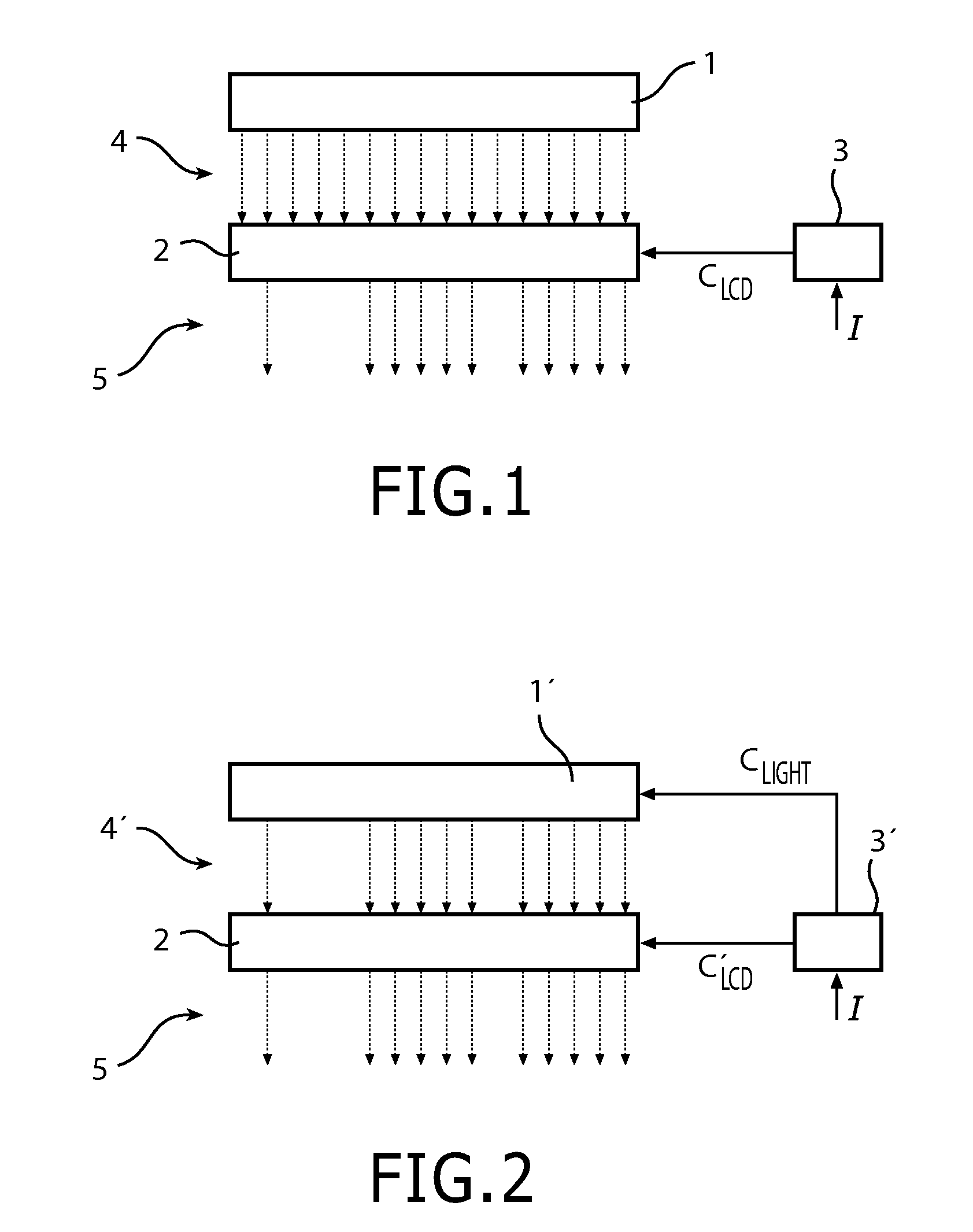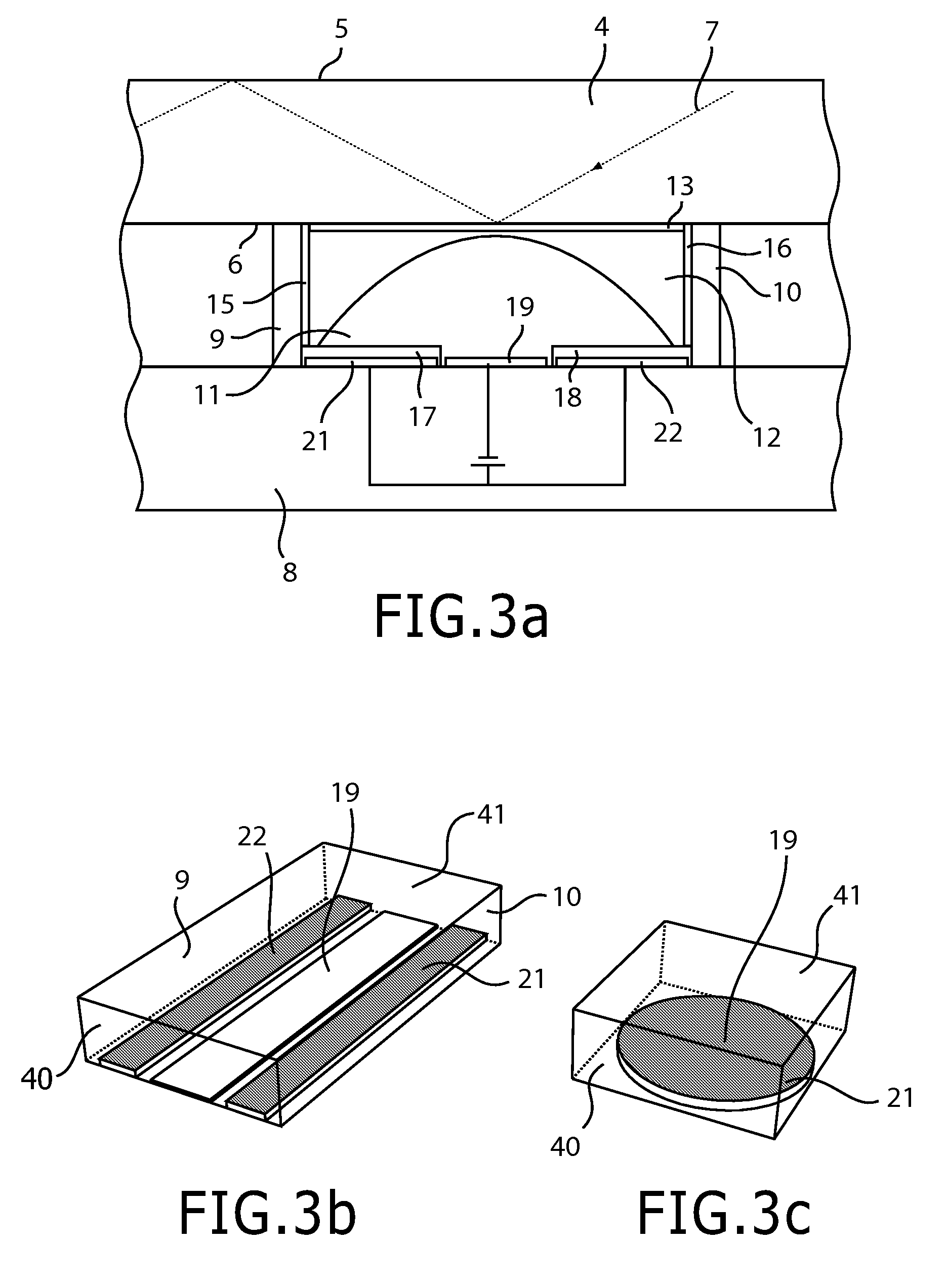Lighting Device
a technology of lighting devices and light sources, applied in lighting and heating apparatus, identification means, instruments, etc., can solve the problems of low light output resolution, complicated arrangement, and marked deterioration of the intended function of lighting devices, so as to reduce the risk of mechanical wear, less complex, and less complicated
- Summary
- Abstract
- Description
- Claims
- Application Information
AI Technical Summary
Benefits of technology
Problems solved by technology
Method used
Image
Examples
first embodiment
[0036]FIG. 3b is a perspective view of a cell layout in a The lateral wall parts 9, 10 are covered by a hydrophobic material, but the front and back wall parts 40, 41 (as seen in the drawing) are moderately hydrophilic, such that the liquid (not shown) will at least partially wet these walls. The hydrophilic electrode 19 on the support plate covers a trace between the front and back wall parts 40, 41. The liquid will therefore have the shape of a cylindrical cap, similar to that of a cylindrical convex lens.
second embodiment
[0037]FIG. 3c is a perspective view of a cell layout in a Both the lateral wall parts and the front and back wall parts 40, 41 have hydrophobic coatings. The hydrophilic surface of the electrode 19 on the support plate is confined to the center of the cell, and the electrode 21 (only one buried electrode needed in this case) surrounds this area. In this alternative, the liquid will approximately have the shape of a spherical cap.
[0038]FIG. 4 illustrates in a cross-section out-coupling arrangements in three different states. A cell in a first state is illustrated at 25. In this cell 25, a zero voltage difference, V0=0 V, is applied between the liquid 11 in the cell and the electrodes 21, 22. In this state, the liquid wets the structured hydrophobic coating on the support plate 8 to only a very limited extent, and the liquid quantity thus has a maximal curvature, i.e. the contact angle θ between the liquid and the support plate, as measured outside the liquid, is relatively small. Th...
PUM
 Login to View More
Login to View More Abstract
Description
Claims
Application Information
 Login to View More
Login to View More - R&D
- Intellectual Property
- Life Sciences
- Materials
- Tech Scout
- Unparalleled Data Quality
- Higher Quality Content
- 60% Fewer Hallucinations
Browse by: Latest US Patents, China's latest patents, Technical Efficacy Thesaurus, Application Domain, Technology Topic, Popular Technical Reports.
© 2025 PatSnap. All rights reserved.Legal|Privacy policy|Modern Slavery Act Transparency Statement|Sitemap|About US| Contact US: help@patsnap.com



